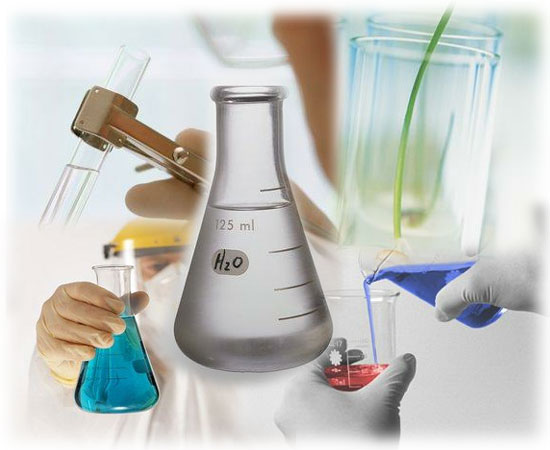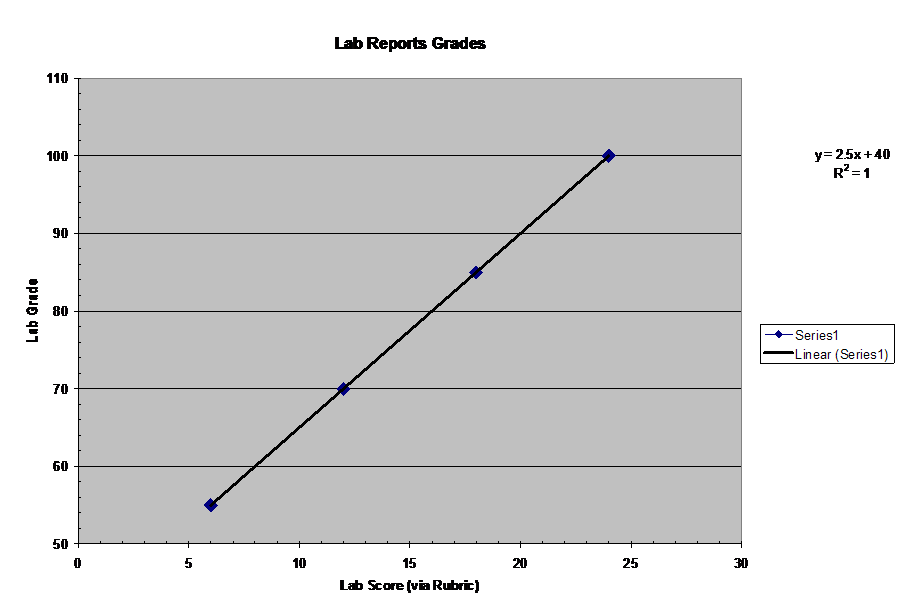 |
CHEMISTRY Pre-AP Lab Report Requirements |
 |
All labs must be done in a composition, bound notebook. There are no exceptions.
The cover or first page (your choice) of the notebook contains the following information:
Name
ChemistryPreAP
Mrs. Shumway
2006-2007
The very next front page is the Table of Contents (ToC) page.
The ToC should be labeled as such by writing it out and underlining it on the top line
The title of each lab should be added to the ToC as it is done, along with the page number on which it begins.
Each lab is given its own line in the ToC.
Do not begin your first lab on the back of the ToC page, as you might need it for listing labs
All pages in the lab notebook should be numbered.
Numbering begins with the first page, although a page number usually does not appear on the first page.
Page numbers should appear in the upper right corner of each page.
Number both the front and back of each page.
Number all pages in the notebook now.
The lab report follows the IMRaD protocol you should be familiar with from SR&D:
Introduction
Methods
Results
analysis (remember, this is lowercase because it’s not its own section)
Discussion
To begin:
Write the lab title in the ToC, along with the page number on which it begins
Re-write the lab title on the top line of the page on which it begins.
Write the date at the top of the page.
The date may be located directly beneath the page number, or to the right of the title, separated by a comma.
Write Introduction:
Write Objective: and give the objective for the lab as a purpose statement; there may be multiple objectives for some labs, write them separately or separated by a semi-colon.
Write Background: and, using paragraph form, discuss all the pertinent background information necessary for performing this lab. Include answers (in paragraph form) to all the prelab questions. Some labs are more complex than others, which should be reflected in the length of the introduction.
Write Methods:
Write out the procedure (all steps) in either a numbered or flowchart fashion. Include any necessary safety precautions or helpful hints. It should not be a simple rewording of the procedure as it is given, as that decreases your understanding of what you’ll be doing in the lab.
Write Results:
Draw any charts and tables you know you’ll need for recording your data and understanding it easily for analysis after the lab is over.
***********************************************************************************************************************************************************************
Here ends the prelab portion of the lab report!
i.e. above this line represents what must be done before you walk in the door on lab day!
N.B. I expect all of this to be done in ink.
Fill in the charts and tables, or paste in graphs made in Graphical Analysis, as you get the data during the lab, or afterwards as you begin your lab analysis (this applies only to graphs).
Perform any calculations, making sure to include all formulas, accepted values, and conversions necessary for doing these calculations. SHOW YOUR WORK!
No lab is complete with calculating its standard error:
Error = |actual-experimental|/experimental*100
If multiple trials are done in any lab, then vital statistics must also be calculated:
Average
Standard deviation
T-test?
If graphs are present, the best-fit line, its equation, and its correlation (R2) value must be displayed on the graph.
Anything pasted in must be done so neatly and permanently; no staples.
Write Discussion:
In paragraph form, discuss:
whether or not the objective was achieved;
the meaning of any calculations you performed;
whether an acceptable level of error was achieved (10% is acceptable);
why there was error and how it could be corrected (vital statistics and graphical analysis are always part of this conversation);
the postlab questions are often helpful in helping you to determine what needs to be addressed for a given lab; do not ignore them.
Lab Report Grading Rubric:
This table summarizes my criteria for grading labs. Pick your own grade!
Section |
4 |
3 |
2 |
1 |
Formatting |
Title, Date, Section Headings all done correctly; lab properly entered in ToC |
1-2 items missing |
3-4 items missing |
>4 items missing |
Prelab |
Introduction, Methods, and Tables/Charts Complete before Lab Begins |
2 items missing |
3 items missing |
>3 items missing |
Introduction |
Objective(s) present and reasonable statements; background thorough, all prelab questions addressed |
Objective missing, but background thorough, all prelab questions addressed OR Objective present, background sufficient (e.g. 1 prelab question unanswered) |
Objective may be missing and 2 prelab questions remain unanswered in background |
Objective may be missing and >2 prelab questions remain unanswered in background |
Methods |
Procedure neatly recorded and reworded thoughtfully in number or flowchart format |
Procedure neatly recorded but not reworded thoughtfully in number or flowchart format |
Procedure recorded, but not in number or flowchart format |
Procedure not recorded in lab notebook |
Results |
Tables/Charts present and filled in; units should be present; Graphs with trendlines, equations, R-values should be present as appropriate; all calculations, standard error, and corresponding work should be shown |
Tables/Charts present and filled in; units should be present; Graphs present but without analysis OR all calculations, standard error are present but corresponding work is not shown |
Tables/Charts present and filled in; units should be present; Graphs OR calculations absent |
Tables/Charts not filled in; no calculations; no graphs |
Discussion |
Thorough error analysis present; meaning of calculations discussed; tell whether or not objective was achieved; post-lab questions addressed |
1 item missing |
2 items missing |
>2 items missing |
Rubric translations in grades (Use the graph and formula below to calculate lab report grades):
